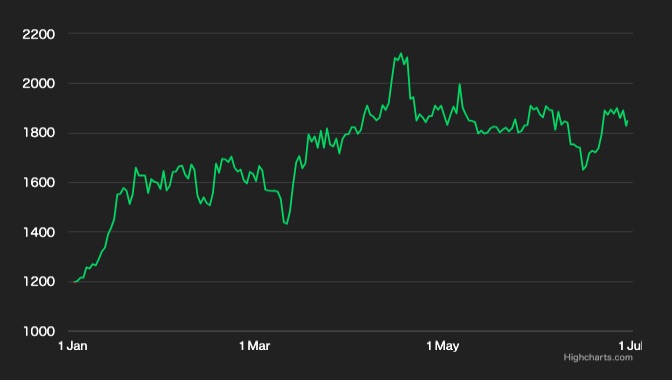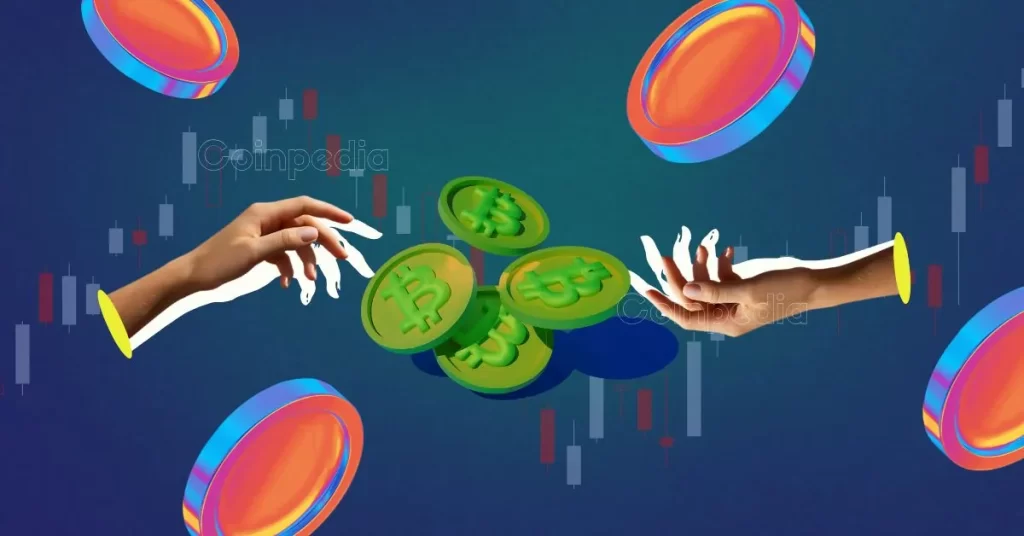
- CoinDesk Smart Contract Platform Select Index Rise Slows
- Stablecoin moves about smart contract platforms may point the way for smart contract platforms
The CoinDesk Smart Contract Platform Select Index (SCPX), calculated by CoinDesk Indices (CDI), is slowing after gaining 12% since June 15.
The performance difference with Bitcoin is a possibility of opportunity
SCPX is up 47.16% since the beginning of the year, but the Bitcoin (BTC)-heavy CoinDesk Currency Select Index (CCYS) is up 81%, widening the performance gap. But this could represent an upside opportunity in the future. Looking at the influx of stablecoins into smart contracts will give us a hint as to when that uptick will occur.
SCPX is an aggregation of the performance of seven crypto assets (virtual currencies) that act as smart contract platforms. The composition ratio is 82.5% for Ethereum (ETH) and 17.5% for the remaining six crypto assets.

 Ethereum year-to-date (CoinDesk)
Ethereum year-to-date (CoinDesk)Ethereum is up 55% year-to-date, while SCPX remains at 43%. This is due to the poor performance of the other six crypto assets that make up the index: Cardano (ADA), Polygon (MATIC), Solana (SOL), Polkadot (DOT), Avalanche (AVAX) and Cosmos (ATOM). is the cause.
However, the correlation coefficient between Bitcoin and Ethereum remains at 0.92. The strong correlation also suggests that performance differences may narrow over time.
Bitcoin has outperformed other crypto assets in a series of high-profile moves surrounding the increased likelihood of Bitcoin exchange-traded fund (ETF) approval. Bitcoin is up 13% against Ethereum since June 6. Ethereum, on the other hand, rose 3% over the same period.
Excluding Bitcoin from the Bitcoin-heavy CoinDesk Currency Select Index (CCYS), the CoinDesk Smart Contract Platform Select Index (SCPX) outperforms CCYS by nearly 4%.
Focus on the movement of stablecoins
The influx of stablecoins to exchanges is most notable for its impact on the trend of Bitcoin, but at the same time, it can be said that the movement of stablecoins themselves indicates the trends of smart contract platforms such as Ethereum.
The influx of stablecoins onto cryptocurrency exchanges often means buying bitcoin. The influx of stablecoins into smart contract platforms, on the other hand, may presage an uptick, but more appropriately, an exchange of value and utility.
Stablecoin supply on smart contract platforms has been in a long-term decline since March, according to research firm Glassnode. This metric aggregates the balance and impact of four stablecoins: Tether (USDT), USD Coin (USDC), Binance USD (BUSD), and Dai (DAI).
The increase in stablecoin supply indicates a growing demand for the use of smart contracts, which is a bullish factor for the crypto assets that make up SCPX. Conversely, a decrease in supply indicates a decrease in demand.
USDT surpassed USDC in May to hold the largest share of stablecoins on smart contract platforms.
The strong rise in SCPX despite the declining supply of stablecoins highlights the resilience of Ethereum, although it falls short of Bitcoin.
Investors who remain bullish on smart contract platforms are hoping for an increase in stablecoin supply as a sign of improving sentiment affecting Ethereum and other crypto assets that make up SCPX. there might be
This is especially true for investors who consider long-term holdings of these crypto assets and can accumulate positions in the crypto assets that make up the CoinDesk Smart Contract Platform Select Index (SCPX). Bitcoin is still at the center of the movement, though.
|Translation: coindesk JAPAN
|Editing: Rinan Hayashi
| Image: CoinDesk
|Original: CoinDesk Indices Smart Contract Platform Highlights the Difference Between Bitcoin and Ether Performance
The post The smart contract platform index is rising and decelerating ── Is there room for Ethereum to rise | CoinDesk JAPAN | Coin Desk Japan appeared first on Our Bitcoin News.

 2 years ago
124
2 years ago
124














 English (US) ·
English (US) ·